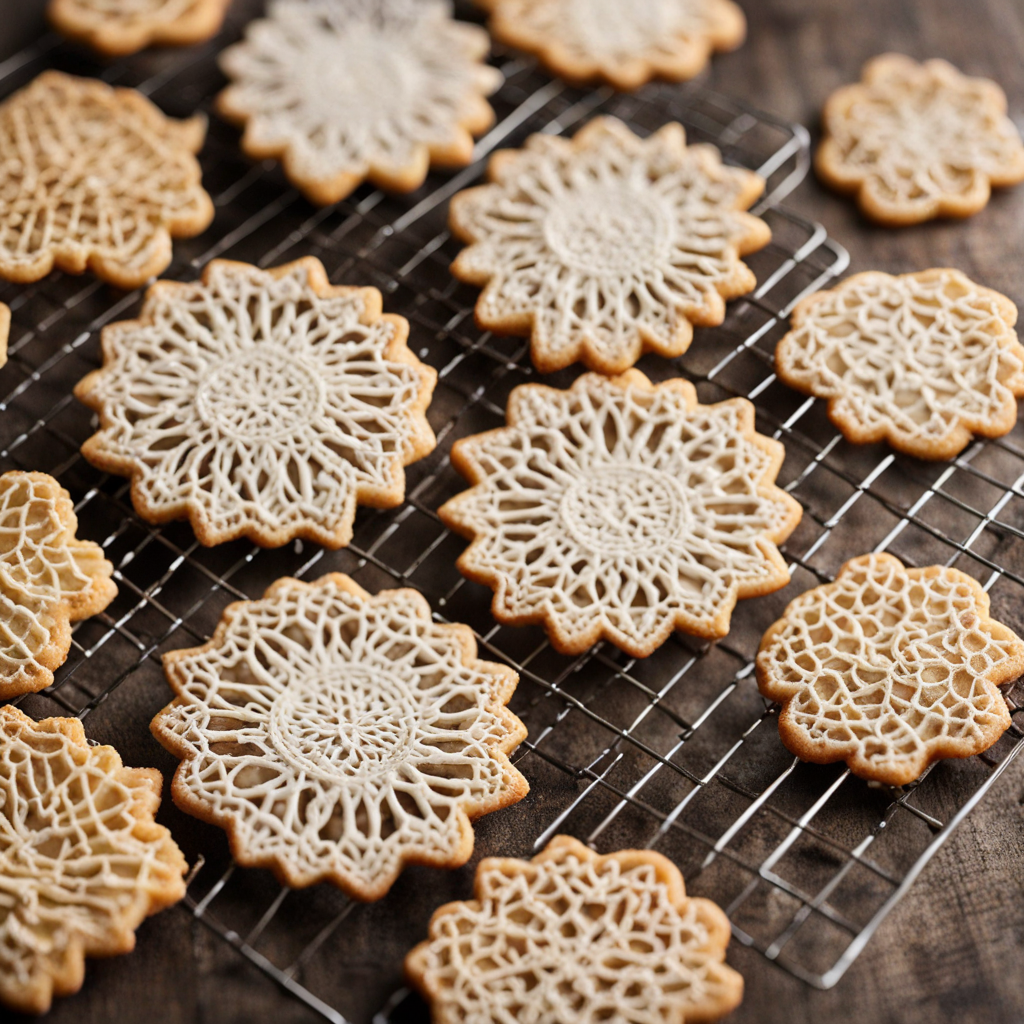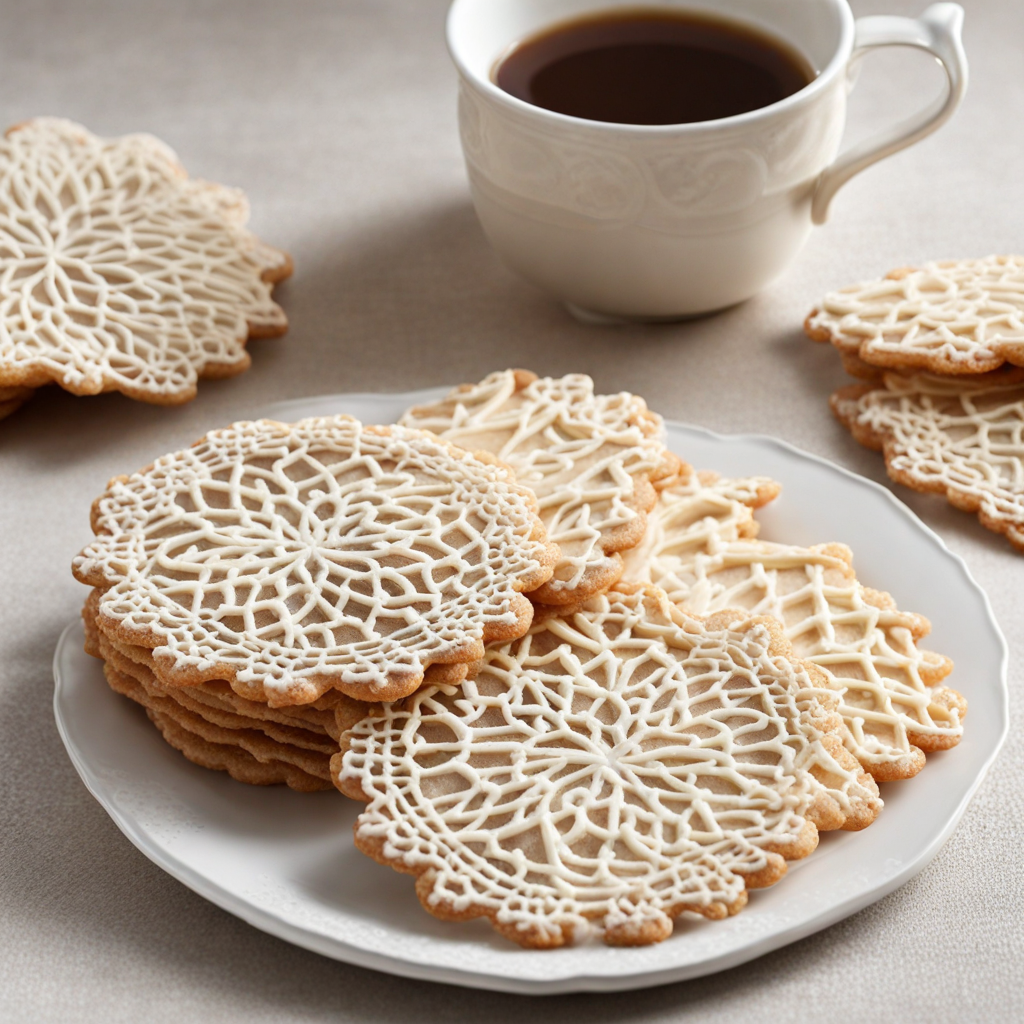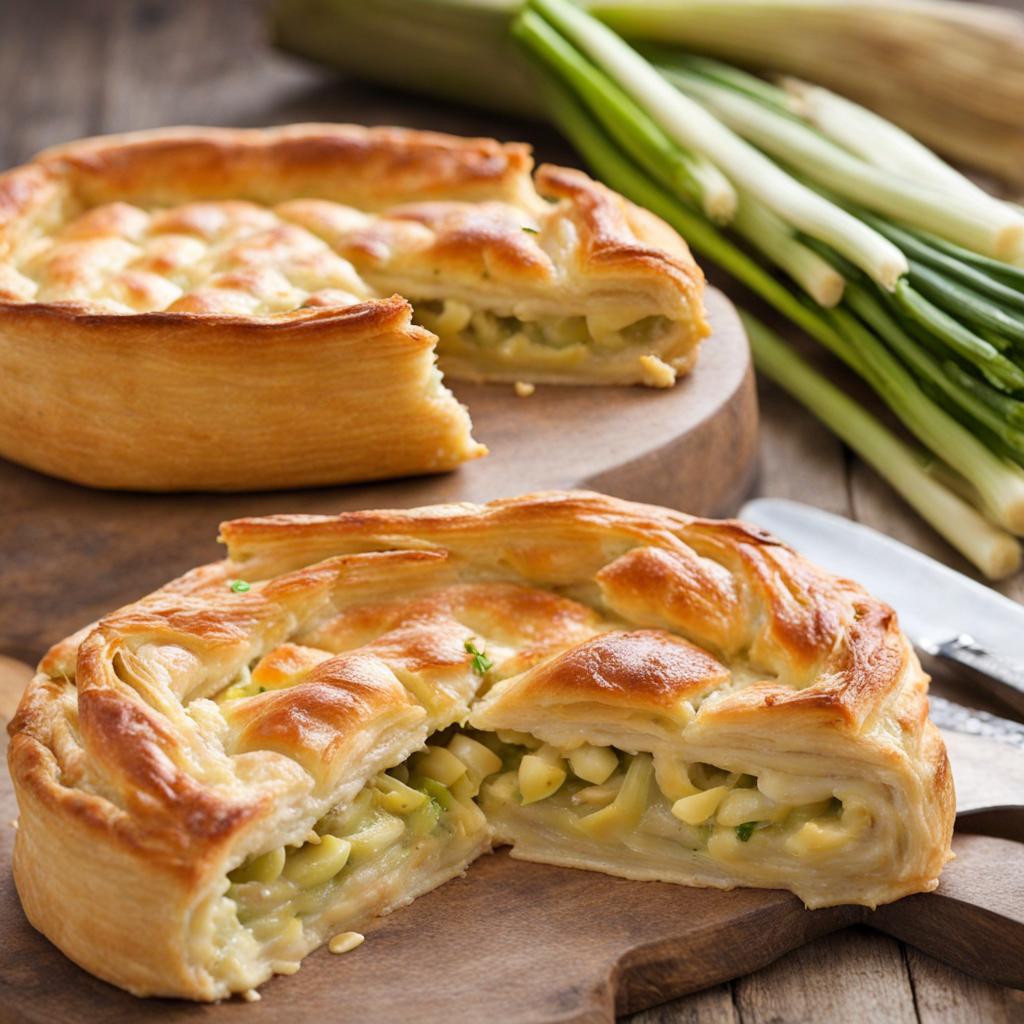Belgian Lace Cookies
Belgian Lace Cookies, known as "Suze" or "Florentines," are delicate, crispy treats that beautifully showcase the rich culinary heritage of Belgium. These cookies are renowned for their intricate lace-like appearance, which is created by combining finely chopped nuts, usually almonds or hazelnuts, with a buttery caramel mixture. The dough is spread thinly on a baking sheet, resulting in a delightful texture that is both crunchy and slightly chewy, thanks to the inclusion of sugar and syrup that caramelizes during baking. The unique design and golden-brown color of these cookies make them visually appealing, making them a delightful addition to any dessert platter or afternoon tea. The flavor profile of Belgian Lace Cookies is a harmonious blend of sweet and nutty, with the toasted nuts lending a rich depth that perfectly complements the buttery sweetness of the cookie itself. Each bite offers a satisfying crunch followed by a melt-in-your-mouth sensation, with the caramelized edges providing an irresistible contrast to the tender center. Some variations may incorporate dark chocolate drizzles or a sprinkle of sea salt, enhancing their flavor complexity and making them even more indulgent. These cookies are not overly sweet, allowing the natural flavors of the nuts to shine through, making them a sophisticated choice for those seeking a nuanced treat. Often enjoyed with a cup of coffee or tea, Belgian Lace Cookies are versatile and can be served on various occasions, from casual gatherings to elegant celebrations. They can also be crumbled over ice cream or used as an elegant topping for desserts, adding a delightful crunch and a touch of gourmet flair. With their unique texture and exquisite taste, Belgian Lace Cookies invite you to explore the sweet side of Belgian cuisine, offering a delightful experience that captures the essence of this charming country.
How It Became This Dish
The Sweet History of Dentelle Belge: A Delicate Belgian Tradition #### Origins of Dentelle Belge Dentelle belge, or Belgian lace, is not just a culinary delight but a symbol of the rich cultural tapestry of Belgium. Its origins can be traced back to the 18th century, a period when Belgium was under the rule of the Austrian Habsburgs. During this time, the region was known for its skilled lace-making artisans, particularly in cities like Bruges and Mechelen. The intricate craftsmanship of lace-making inspired the creation of a thin, crunchy cookie that resembles the delicate patterns of lace. The cookie itself is a delightful blend of simple ingredients: flour, sugar, butter, and eggs. However, the magic lies in the way these ingredients are combined and baked. Traditionally, the dough is rolled out into thin sheets, which are then baked until golden brown and crisp. The result is a cookie that is light, airy, and with a fragile texture, much like the lace it is named after. #### Cultural Significance Dentelle belge has played an integral role in Belgian culture, particularly in the context of culinary traditions. The cookie is often associated with celebrations and special occasions. It is a staple at weddings, christenings, and festivals, where it is served as a treat to guests. The delicate nature of the cookie symbolizes elegance and refinement, making it a cherished item on any festive table. Moreover, dentelle belge is often paired with beverages such as coffee or tea, enhancing the gastronomic experience. In Belgium, where coffee culture is deeply embedded, the lightness of the dentelle complements the strong, rich flavors of the coffee, offering a perfect balance that highlights the cookie's subtle sweetness. The cookie has also found its place in the world of confections, often being used as an accompaniment for ice cream or as a decorative element in pastry creations. Chefs and bakers utilize dentelle belge to add texture and visual appeal to their desserts, elevating the dining experience. #### Development Through Time As Belgium entered the 19th century, dentelle belge began to gain popularity beyond its local roots. The Industrial Revolution brought about significant changes in food production, and traditional recipes were adapted to meet the demands of a growing urban population. Bakeries began to produce dentelle on a larger scale, making it more accessible to the general public. In the late 19th and early 20th centuries, the popularity of dentelle belge expanded internationally. Belgian chocolatiers and patisseries began to export these delicate cookies, often pairing them with their famous chocolates. This period marked the beginning of Belgium's reputation as a center for high-quality confectionery, and dentelle belge became a symbol of Belgian craftsmanship in the culinary world. The interwar period saw further innovation in the production of dentelle belge. New techniques and machinery allowed for more consistent baking, and bakers experimented with flavors and ingredients. Variations began to emerge, including versions infused with spices, citrus, or even chocolate. These adaptations not only catered to changing tastes but also allowed for the integration of local ingredients, further embedding the cookie into the regional culinary identity. #### Modern Era and Global Recognition By the late 20th century, dentelle belge had firmly established itself as a beloved treat both in Belgium and abroad. The rise of globalization and the increasing popularity of Belgian cuisine contributed to its international recognition. Tourists visiting Belgium often seek out authentic dentelle belge as a souvenir, cementing its status as a culinary emblem of the country. In recent years, the emphasis on artisanal and locally sourced ingredients has led to a resurgence of traditional baking methods. Many small bakeries and patisseries are now producing dentelle belge using age-old recipes, often emphasizing organic and local ingredients. This movement reflects a broader trend in the culinary world, where consumers are increasingly interested in the stories behind their food. Moreover, dentelle belge has also made its way into modern gastronomy. Chefs are creatively incorporating the cookie into contemporary desserts, using it as a base for innovative dishes or as a textural element in plated desserts. This evolution keeps dentelle belge relevant in today's culinary landscape while honoring its traditional roots. #### Conclusion In summary, dentelle belge is more than just a cookie; it encapsulates a rich history that intertwines art, culture, and gastronomy. From its origins in the lace-making towns of Belgium to its status as a beloved treat enjoyed worldwide, dentelle belge represents the delicate balance of tradition and innovation. As it continues to evolve, this iconic cookie remains a tribute to the craftsmanship and culinary heritage of Belgium, inviting everyone to savor not just its flavor but also the story it tells. The next time you enjoy a bite of dentelle belge, remember that you are partaking in a tradition that has woven itself into the very fabric of Belgian culture for centuries.
You may like
Discover local flavors from Belgium







